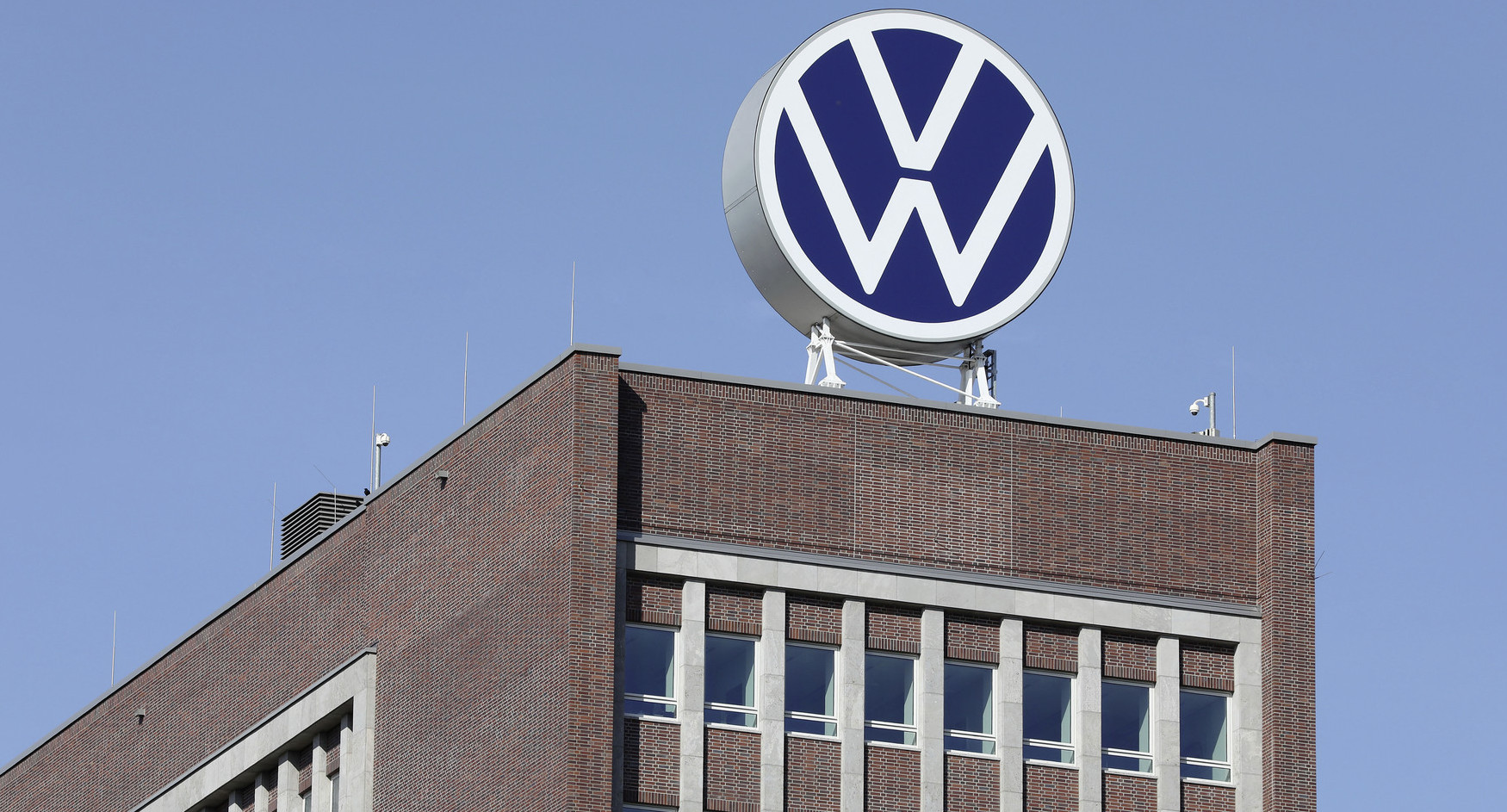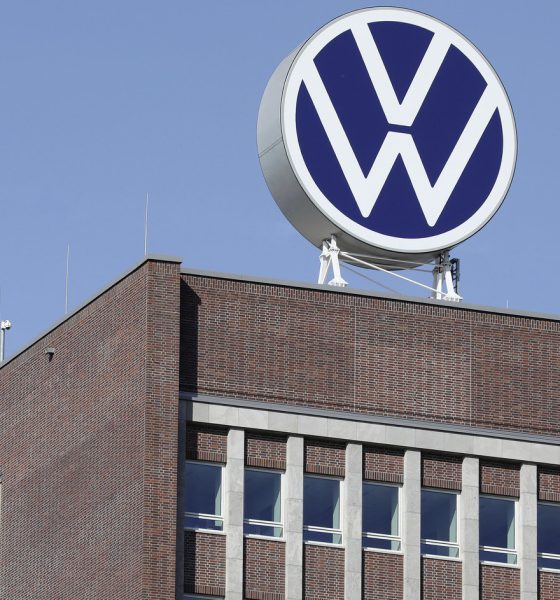

News
GM, Ford hit by C-19 virus; VW, Daimler, auto industry reel in impact of Corona pandemic
The auto industry is now feeling the weight on the ongoing C-19 pandemic, with veteran automakers Volkswagen and Daimler announcing that they will be suspending production in their European facilities. The news comes as updates from GM, Ford, and Fiat-Chrysler in the US revealed that workers from the Big Three automakers have tested positive for the coronavirus.
Volkswagen’s update was announced by CEO Herbert Diess, who spoke to reporters on Tuesday. Diess stated that amidst the pandemic, Volkswagen has decided to suspend work at most of the company’s European factories for at least two weeks. These include facilities in Spain, Slovakia, and Italy, all of which will be halted by the end of the week.
Frank Witter, chief financial officer at Volkswagen, explained the decision in a statement on Tuesday. “The spread of coronavirus is currently impacting the global economy. It is uncertain how severely or for how long this will also affect the Volkswagen Group. Currently, it is almost impossible to make a reliable forecast. We are making full use of all measures in task force mode to support our employees and their families and to stabilize our business,” he said.
Fellow German carmaker Daimler also announced that it would be suspending most of its production in Europe for at least two weeks in an effort contain the spread of the coronavirus. In a statement, Daimler remarked that the closures would be affecting the company’s car, van, and commercial vehicle facilities.
“The suspension applies to Daimler’s car, van, and commercial vehicle plants in Europe and will start this week. With these closures, Daimler is helping to protect its workforce, to interrupt chains of infection and to contain the spread of the pandemic,” the automaker noted.
Amidst the reports from Europe, American automakers Ford and GM have confirmed to The Detroit News that one employee from each automaker has tested positive for the coronavirus. The carmakers stated that both workers, one from Warren GM and the other from Dearborn Ford, are currently in quarantine and receiving medical attention.
In a statement, Ford spokesman T.R. Reid remarked that the worker who tested positive for COVID-19 was working remotely when the virus was contracted. As a result, the employee is expected to not have spread the virus to co-workers at the Dearborn facility.
“He was exposed after leaving the office several days ago. He was diagnosed before returning to the office. Has not been to the office or any Ford facility,” Reid said, adding that there is currently no need to close the Dearborn plant since the affected employee never returned to the office since contracting the virus.
The General Motors employee who tested positive for the virus, on the other hand, was in the Cole Engineering Center when COVID-19 was contracted. GM’s medical team is currently contacting individuals that may have had direct contact with the employee in question. Once determined, the potentially affected workers will be advised to self-quarantine for two weeks. Public health officials have been contacted to help clean and disinfect work and common areas at the GM site as well.
In a statement, GM noted that the company had been in contact with the employee who contracted the virus. “We have been in contact with the family and put our emergency response plan into action, building on the preventive measures we have already taken, which include directing employees at the Cole Technical Center and other sites to work remotely if possible,” GM stated.
A Fiat Chrysler employee from the company’s Kokomo Transmission Plant in Indiana has also tested positive for the coronavirus. Reports indicate that the FCA employee is receiving medical attention, and those who he came in contact with have been put in self-quarantine.

Elon Musk
Elon Musk and Tesla AI Director share insights after empty driver seat Robotaxi rides
The executives’ unoccupied tests hint at the rapid progress of Tesla’s unsupervised Robotaxi efforts.

Tesla CEO Elon Musk and AI Director Ashok Elluswamy celebrated Christmas Eve by sharing personal experiences with Robotaxi vehicles that had no safety monitor or occupant in the driver’s seat. Musk described the system’s “perfect driving” around Austin, while Elluswamy posted video from the back seat, calling it “an amazing experience.”
The executives’ unoccupied tests hint at the rapid progress of Tesla’s unsupervised Robotaxi efforts.
Elon and Ashok’s firsthand Robotaxi insights
Prior to Musk and the Tesla AI Director’s posts, sightings of unmanned Teslas navigating public roads were widely shared on social media. One such vehicle was spotted in Austin, Texas, which Elon Musk acknowleged by stating that “Testing is underway with no occupants in the car.”
Based on his Christmas Eve post, Musk seemed to have tested an unmanned Tesla himself. “A Tesla with no safety monitor in the car and me sitting in the passenger seat took me all around Austin on Sunday with perfect driving,” Musk wrote in his post.
Elluswamy responded with a 2-minute video showing himself in the rear of an unmanned Tesla. The video featured the vehicle’s empty front seats, as well as its smooth handling through real-world traffic. He captioned his video with the words, “It’s an amazing experience!”
Towards Unsupervised operations
During an xAI Hackathon earlier this month, Elon Musk mentioned that Tesla owed be removing Safety Monitors from its Robotaxis in Austin in just three weeks. “Unsupervised is pretty much solved at this point. So there will be Tesla Robotaxis operating in Austin with no one in them. Not even anyone in the passenger seat in about three weeks,” he said. Musk echoed similar estimates at the 2025 Annual Shareholder Meeting and the Q3 2025 earnings call.
Considering the insights that were posted Musk and Elluswamy, it does appear that Tesla is working hard towards operating its Robotaxis with no safety monitors. This is quite impressive considering that the service was launched just earlier this year.
Elon Musk
Starlink passes 9 million active customers just weeks after hitting 8 million
The milestone highlights the accelerating growth of Starlink, which has now been adding over 20,000 new users per day.

SpaceX’s Starlink satellite internet service has continued its rapid global expansion, surpassing 9 million active customers just weeks after crossing the 8 million mark.
The milestone highlights the accelerating growth of Starlink, which has now been adding over 20,000 new users per day.
9 million customers
In a post on X, SpaceX stated that Starlink now serves over 9 million active users across 155 countries, territories, and markets. The company reached 8 million customers in early November, meaning it added roughly 1 million subscribers in under seven weeks, or about 21,275 new users on average per day.
“Starlink is connecting more than 9M active customers with high-speed internet across 155 countries, territories, and many other markets,” Starlink wrote in a post on its official X account. SpaceX President Gwynne Shotwell also celebrated the milestone on X. “A huge thank you to all of our customers and congrats to the Starlink team for such an incredible product,” she wrote.
That growth rate reflects both rising demand for broadband in underserved regions and Starlink’s expanding satellite constellation, which now includes more than 9,000 low-Earth-orbit satellites designed to deliver high-speed, low-latency internet worldwide.
Starlink’s momentum
Starlink’s momentum has been building up. SpaceX reported 4.6 million Starlink customers in December 2024, followed by 7 million by August 2025, and 8 million customers in November. Independent data also suggests Starlink usage is rising sharply, with Cloudflare reporting that global web traffic from Starlink users more than doubled in 2025, as noted in an Insider report.
Starlink’s momentum is increasingly tied to SpaceX’s broader financial outlook. Elon Musk has said the satellite network is “by far” the company’s largest revenue driver, and reports suggest SpaceX may be positioning itself for an initial public offering as soon as next year, with valuations estimated as high as $1.5 trillion. Musk has also suggested in the past that Starlink could have its own IPO in the future.
News
NVIDIA Director of Robotics: Tesla FSD v14 is the first AI to pass the “Physical Turing Test”
After testing FSD v14, Fan stated that his experience with FSD felt magical at first, but it soon started to feel like a routine.

NVIDIA Director of Robotics Jim Fan has praised Tesla’s Full Self-Driving (Supervised) v14 as the first AI to pass what he described as a “Physical Turing Test.”
After testing FSD v14, Fan stated that his experience with FSD felt magical at first, but it soon started to feel like a routine. And just like smartphones today, removing it now would “actively hurt.”
Jim Fan’s hands-on FSD v14 impressions
Fan, a leading researcher in embodied AI who is currently solving Physical AI at NVIDIA and spearheading the company’s Project GR00T initiative, noted that he actually was late to the Tesla game. He was, however, one of the first to try out FSD v14.
“I was very late to own a Tesla but among the earliest to try out FSD v14. It’s perhaps the first time I experience an AI that passes the Physical Turing Test: after a long day at work, you press a button, lay back, and couldn’t tell if a neural net or a human drove you home,” Fan wrote in a post on X.
Fan added: “Despite knowing exactly how robot learning works, I still find it magical watching the steering wheel turn by itself. First it feels surreal, next it becomes routine. Then, like the smartphone, taking it away actively hurts. This is how humanity gets rewired and glued to god-like technologies.”
The Physical Turing Test
The original Turing Test was conceived by Alan Turing in 1950, and it was aimed at determining if a machine could exhibit behavior that is equivalent to or indistinguishable from a human. By focusing on text-based conversations, the original Turing Test set a high bar for natural language processing and machine learning.
This test has been passed by today’s large language models. However, the capability to converse in a humanlike manner is a completely different challenge from performing real-world problem-solving or physical interactions. Thus, Fan introduced the Physical Turing Test, which challenges AI systems to demonstrate intelligence through physical actions.
Based on Fan’s comments, Tesla has demonstrated these intelligent physical actions with FSD v14. Elon Musk agreed with the NVIDIA executive, stating in a post on X that with FSD v14, “you can sense the sentience maturing.” Musk also praised Tesla AI, calling it the best “real-world AI” today.








